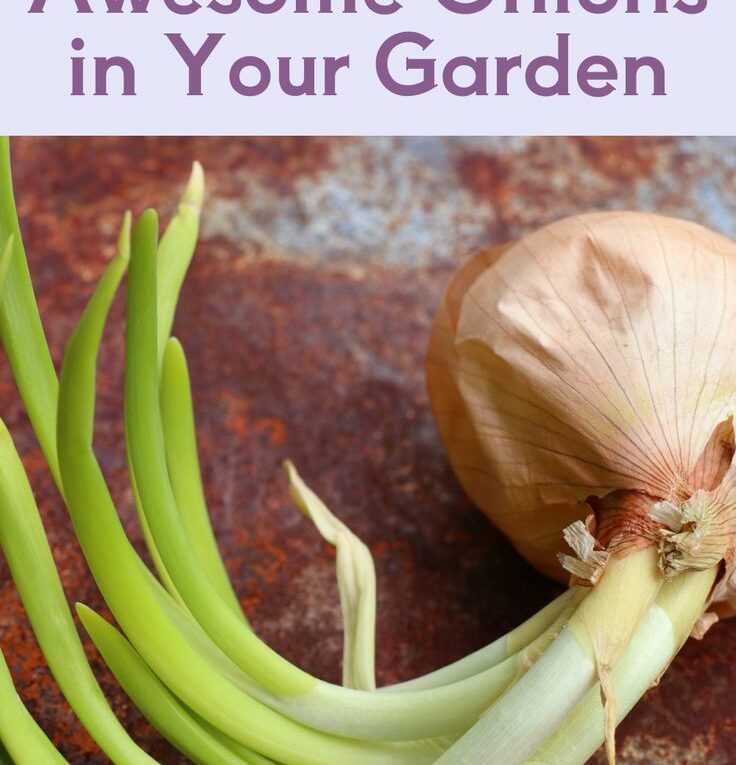How to Grow Onions from Onions
Onions are a fundamental ingredient in countless cuisines, adding a depth of flavor that elevates dishes from simple to sensational. But have you ever considered growing your own onions from scratch? It’s surprisingly easy and incredibly rewarding! This comprehensive guide will unveil the secrets to cultivating your own onions from a humble grocery store bulb, transforming your kitchen scraps into a thriving crop.
The Allure of Growing Onions at Home: Freshness at Your Fingertips
There’s something undeniably satisfying about nurturing your own food. Here are just a few reasons to embark on this onion-growing adventure:
- Unmatched Freshness: Homegrown onions boast a superior flavor compared to store-bought varieties. You’ll harvest them at peak ripeness, ensuring the most robust and nuanced taste.
- The Joy of Self-Sufficiency: Imagine whipping up a culinary masterpiece with onions you’ve nurtured from sprout to harvest. It’s a delightful way to connect with your food source and appreciate the journey from garden to table.
- Cost-Effective and Sustainable: Growing your own onions reduces grocery bills and minimizes food waste. Plus, you’re eliminating the environmental impact of commercial production and transportation.
- A Fun and Educational Activity: Growing onions is a fantastic project for children and adults alike. It fosters an appreciation for plant life and the cycle of growth, making it a valuable learning experience.

From Bulb to Bounty: The Stages of Onion Growth
Understanding the lifecycle of an onion will guide your planting and care efforts. Here’s a simplified breakdown of the stages you can expect to witness:
- Sprouting (1-2 Weeks): After planting the onion bulb, roots will emerge first, followed by green shoots pushing through the soil.
- Leaf Development (4-6 Weeks): The green shoots mature into slender leaves, forming a healthy clump of foliage.
- Bulb Formation (6-8 Weeks): As the plant matures, it will begin to swell at the base, forming the onion bulb underground.
- Ripening (10-16 Weeks): The tops will begin to brown and die back, signaling that the onion bulb is fully mature and ready for harvest.
Choosing the Right Onion for Regrowing:
Not all onions are created equal for regrowing purposes. Here are some ideal candidates:
- Yellow Onions: A classic choice for home regrowing, offering a strong and versatile flavor.
- Red Onions: A beautiful variety with a slightly milder flavor compared to yellow onions.
- Sweet Onions: Perfect for those who prefer a milder onion flavor.
The Essential Steps to Onion Regrowth Success
Now that you’re prepped with the basics, let’s delve into the practical steps for growing onions from store-bought bulbs:
Selecting Your Onion Bulb:
- Choose a firm onion with a healthy root end. Avoid any soft spots or signs of mold.
- Organic onions are a good option, as they’re less likely to have been treated with growth inhibitors.
The Regrowing Method: Water or Soil?
There are two main methods for regrowing onions:
- Water Method: Simply place the onion root end down in a shallow container filled with fresh water. Ensure the water level only covers the very bottom of the onion. Refresh the water every few days to prevent stagnation. Roots will sprout from the base, and green shoots will emerge from the top. Once the shoots reach a few inches tall, you can transplant the onion into soil.
- Soil Method: Fill a pot with well-draining potting mix. Plant the onion root end down, leaving the top third of the bulb exposed above the soil surface. Water thoroughly and keep the soil consistently moist but not soggy.
Planting and Care:
- Light: Provide your onions with at least 6-8 hours of bright, indirect sunlight daily.
- Soil: Opt for a well-draining potting mix with a slightly acidic pH level (around 6.0-6.8).
- Watering: Water regularly, keeping the soil moist but not waterlogged. Allow the top inch of soil to dry slightly between waterings.
- Fertilizer: You can provide a light feeding of a balanced fertilizer every few weeks during the growing season.
Harvesting and Storing Your Homegrown Onions:
- Signs of Maturity: When the tops of the onion plant begin to brown and die back, it’s harvest time! The bulb should feel firm to the touch.
- Harvesting: Gently loosen the soil around the base of the onion and carefully pull it up. Remove any loose dirt and allow the onion to cure in a cool, well-ventilated area for a few weeks. This allows the outer skin to dry and harden, promoting better storage.
- Storing: Store your homegrown onions in a cool, dark, and well-ventilated area. Ideal locations include a mesh bag hung in a pantry or a ventilated basket placed in a cool basement. Proper storage can extend the shelf life of your onions for several months.
Beyond the Basics: Tips for Thriving Onion Crops
- Succession Planting: Plant onions every few weeks throughout the spring season to enjoy a continuous harvest of fresh onions.
- Companion Planting: Consider companion planting your onions with other vegetables like carrots, lettuce, or beets. These plants can help deter pests and create a more balanced garden ecosystem.
- Dealing with Pests: Onions are relatively pest-resistant, but occasional issues with thrips or onion flies can occur. Opt for organic methods like neem oil spray or insecticidal soap to control pest populations.
By following these steps and incorporating these helpful tips, you’ll be well on your way to cultivating a thriving crop of onions from the comfort of your own home. The satisfaction of harvesting and enjoying your homegrown vegetables is an unparalleled experience. So, grab those leftover onion bulbs, embrace the joy of gardening, and embark on a rewarding adventure in onion regrowth!
